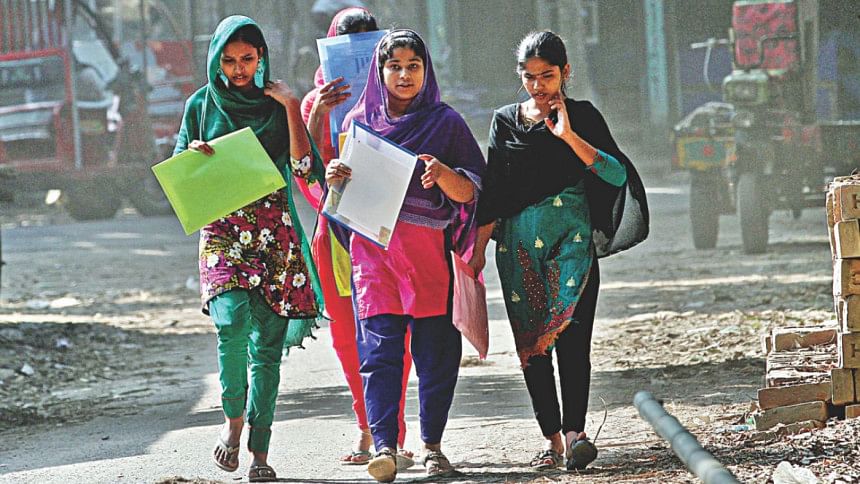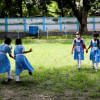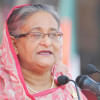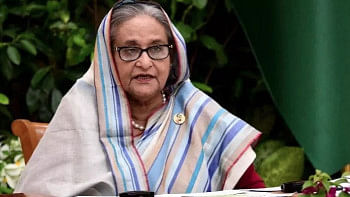Better lives for girls are coming, but we must speed up

Maya, a 16-year-old girl from Dolakha district in Nepal, is already a mother and a wife. Nepal has the second highest adolescent pregnancy rate in South Asia, and it is estimated that one in ten girls there will marry below the age of 15. A large proportion of them will drop out of school.
But Maya has been helped to go back to class, and attends an Adolescent Friendly Space for girls aged 12-18. Of the 22 girls in Maya's group, half are married; some are pregnant, while others are mothers already. At the end of March, Maya took her school leaving exams and hopes to continue on to higher education. She knows that will be harder as a young married woman with a child. But she is using her experience to raise the confidence of other younger girls: "As a girl, you already face many barriers. It is better to focus on your own goals and complete your studies."
Maya's story shows how to go beyond describing the tough reality, to changing it. We can be led by an optimistic realism, focused on the power of girls rather than their plight, and on enabling girls to learn, lead, decide and thrive.
It is understandable that we focus on the injustices faced by girls – in getting the education they need, or having their voices heard, or simply to be an adolescent without being forced into marriage and motherhood. We must repeatedly demonstrate that girls are denied their rights simply because of their gender. But if we do not give equal weight to the solutions, and to the progress we have made, we can quickly become trapped in a counsel of despair.
The world increasingly recognises the importance of securing the rights of girls, reflected in the Sustainable Development Goals (SDGs) adopted last year by the UN. Now is the time to galvanise the movement for girls' rights that has emerged in recent years, to become ever more impatient for change. Better is possible.
The confidence to decide for themselves is not only critical to girls improving their own lives, but also to accelerating progress more widely. Gema is 17 years old, one of over 2,300 adolescents taking part in the 'Teenage Pregnancy-free Zone' project in Ecuador. It promotes empowerment, participation and self-esteem to lower the high rates of teenage pregnancy. She became involved when she was 14, struck by the number of classmates dropping out of school when they became pregnant. With a few friends, she went door to door to speak to mothers and fathers to change minds little by little. Her determination took her to New York, at our invitation, to participate in the Annual Commission on the Status of Women at the United Nations; now Gema is going to university to study medicine.
So change is happening, but it is painfully slow. Imagine if our approach to child pregnancy was driven by the same urgency as the response to polio; if we saw the denial of girls' right to education with the same focus. How much nearer to our goals would we be?
We certainly can't keep on as before, and expect different outcomes. According to a 2011 UNESCO report, a young girl in South Sudan is three times more likely to die in pregnancy or childbirth than to complete grade 8. If we cannot change social norms that deny girls access to comprehensive sexuality education, contraception and bodily integrity, how can we hope to address the goal of equalising access to education? We need larger scale solutions that bring transformation at a global level, building on the kinds of projects that helped Maya and Gema. It's about practical action, growing and strengthening the movement for girls' rights to create the space for bigger, better solutions to be developed, and equipping girls with the confidence and skills to make change themselves.
Progress remains stubbornly slow in part because we lack the numbers to track it. There are no reliable worldwide figures on the number of girls under 15 years who become pregnant each year. We do not adequately measure the number of girls who leave school due to marriage, pregnancy, or sexual violence, simply the number in school. Millions of girls are left invisible.
That's why we're launching a new partnership to fill the data gaps. Real data, relevant to girls, will enable us to see how fast progress is being made to end early and forced marriage, to achieve gender parity in secondary education, to abolish female genital mutilation and to ensure girls have the same job opportunities as boys.
We also need to see the reality of the lives of girls, so often overlooked. We need to hear the voice of girls like Gema and Maya: girls with insight into the barriers, with experience of overcoming them. Because the people who are really going to change things are girls themselves.
The writer is CEO of child rights organisation, Plan International.

 For all latest news, follow The Daily Star's Google News channel.
For all latest news, follow The Daily Star's Google News channel. 







Comments